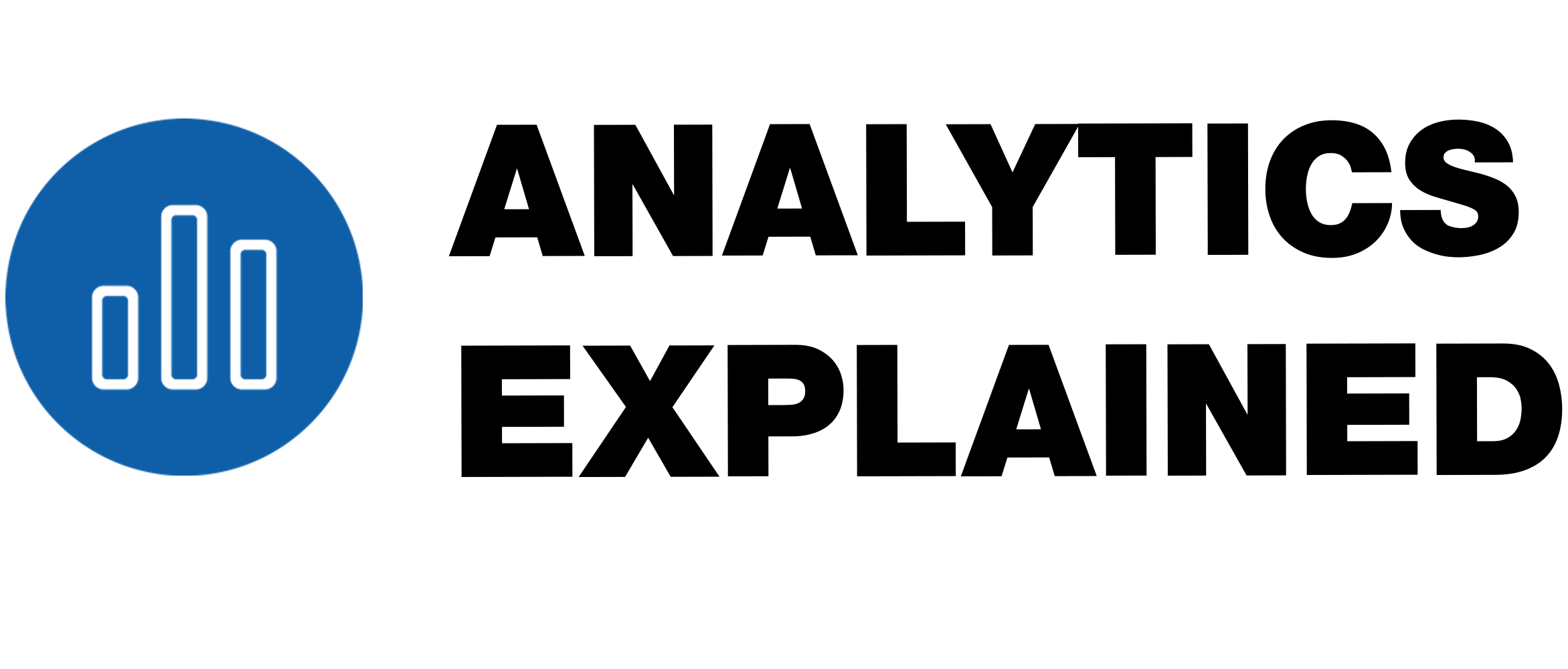If you make data-driven decisions or are in the field of analytics, it’s essential to differentiate between the four types of analytics and when to use them. In this article, I’ll describe the four types of analytics along with techniques, tools, examples, and positions associated with them.
1. Descriptive Analytics
With this type of analytics, you explain what happened.
An example is providing the total sales of the top ten salespeople in your company last year.
This is the most basic type of analytics.
Techniques
Examples of techniques include:
- Summary statistics such as counts, sums, and averages
- Metrics reports
- Data aggregation
- Data Mining
- Data Visualization
Tools
Examples of tools include:
- Microsoft Excel
- Tableau
- Power BI
Positions
Although a wide range of employees frequently utilizes this type of analytics, these roles tend to specialize in related activities:
- Business Analyst
- Data Analyst
2. Diagnostic Analytics
With this type of analytics, you explain why something happened.
An example is explaining why the sales for a product increased or decreased in a specific year. You should expect to perform this type of analysis in moderately data-driven companies.
Techniques
Examples of techniques include:
- Data mining involving multiple hierarchies and data sources
- Correlations
- Probabilities
- Regression Analysis
- Sensitivity Analysis
- Clustering
Tools
Examples of tools (and programming languages) used include:
- Microsoft Excel
- Tableau
- Power BI
- Python
- R
Positions
Although a wide range of employees frequently utilizes this type of analytics, these roles tend to specialize in related activities:
- Business Analyst
- Data Analyst
3. Predictive Analytics
With this type of analytics, you forecast what might happen.
The essence of predictive analytics is to devise models based on existing data points to predict future data points’ probabilities.
With this type of analytics, you often predict future patterns from time-series data, predict numerical values using regression techniques, and predict categorical values using classification techniques.
An example of this is forecasting the sales of a department store over the next few months using data from the last several years.
Another example is building a machine learning classification model that predicts whether a customer is likely to seek business elsewhere by using data about former customers that had similar behaviors and attributes in the past.
Techniques
Examples of techniques include:
- Forecasting
- Machine Learning
- Statistical Inferences
- Simulation
- Deep Learning
- Game Theory
- Sentiment Analysis
Tools
Examples of tools (and programming languages) used include:
- Python
- R
- DataRobot
- RapidMiner
- SAS
Positions
The types of positions that use this type of analytics include:
- Data Scientist
- Machine Learning Engineer
- Data Analyst (depending on the organization)
4. Prescriptive Analytics
With this type of analytics, you recommend an action, product, or service based on a forecast.
It can recommend products and services to you based on your past behaviors on a digital platform such as Netflix. Additionally, it can suggest all favorable outcomes according to a specified course of action and recommend various courses of actions to get to a particular result.
For example, on YouTube, videos are recommended to you based on the videos that you like, engage with the most, watch to completion, and more. YouTube algorithms use over 80 million data points to determine what videos are suggested to you.
Techniques
Examples of techniques include:
- Recommendation Engines
- Optimization
- Simulation
Positions
The types of positions that use this type of analytics include:
- Decision Scientist
- Decision Analyst
- Data Scientist
- Machine Learning Engineer
Tools
Examples of tools (and programming languages) used include:
- The “Surpise” package under Python which is used for recommendation engines
- The “SimPy” package for Python which is used for simulations
- Gurobi, which is a tool used for optimization
Additional Considerations

As shown above, the more sophisticated the type of analytics is, the more usable it is for decision support, decision automation, and actional insights.
The first two types of analytics are used in most organizations, which typically have large, structured, and multi-year data sources. The last two types of analytics (predictive and prescriptive), are used in the organizations that are the most technologically inclined and data-dependent. Predictive and prescriptive analytics fall under the umbrella of advanced analytics.
Sources:
- https://www.analyticsinsight.net/four-types-of-business-analytics-to-know/#:~:text=Depending%20on%20the%20stage%20of,%2C%20diagnostic%2C%20predictive%20and%20prescriptive.
- https://www.scnsoft.com/blog/4-types-of-data-analytics
- https://www.michiganstateuniversityonline.com/resources/business-analytics/types-of-data-analytics-and-how-to-apply-them/


